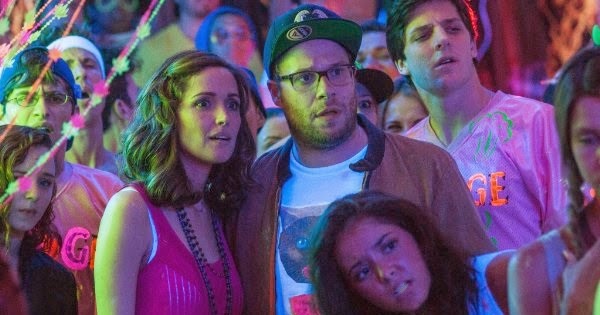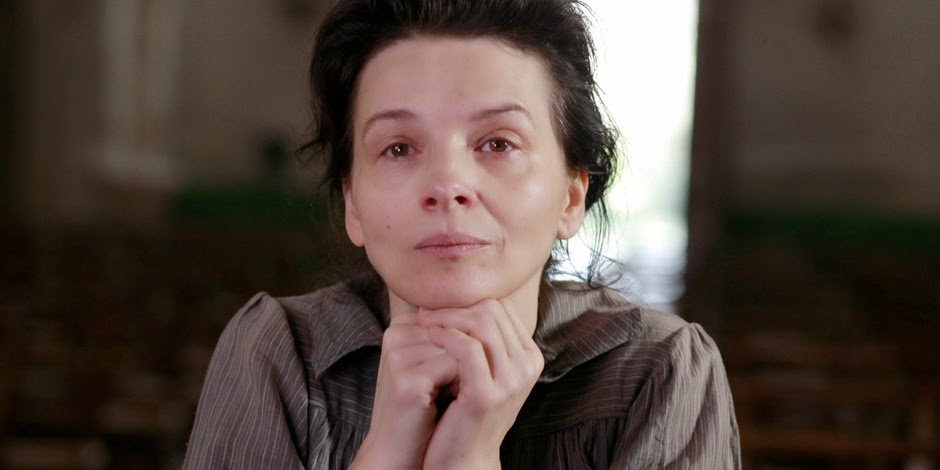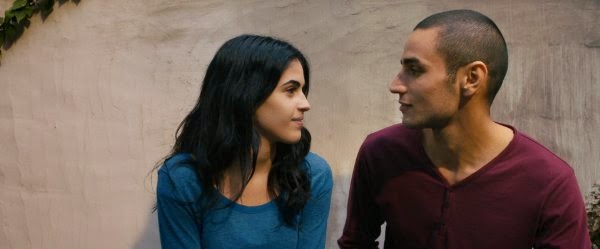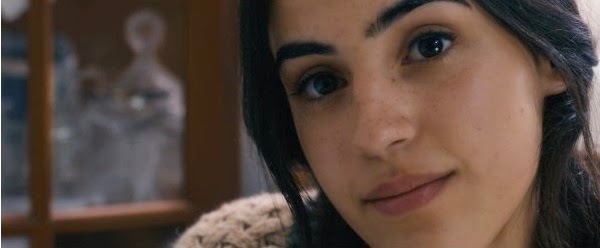Plastic is not a very good movie. The dialogue is laughable, the performances are iffy, it's directed with as much verve as an insurance infomercial and plotwise it's about on parallel with an average episode of Hustle. But it at least has the decency to be relatively quick and breezy and, at bare minimum, is enjoyable as trash.
Our heroes are four students making their way through uni with a combination of credit card fraud and low-level fencing. They are; Sam (Ed Speleers), the brainy one; Fordy (Will Poulter), the trustworthy one; Yatesey (Alfie Allen), the dickhead one; and Rafa (Sebastian De Souza), the gullible one. Between them they run a pretty tight operation, working in tandem to clone cards, steal pins, commit identity fraud, but online goods and sell them off to other students. But then it all goes tits up. They piss off a German gangster (Thomas Kretschmann), who threatens to kill them unless they can get £2 million for him in just two weeks. The film then takes a slight left turn from the dreary, overcast skies of the outskirts of London to Miami, where the gang, now with a blonde girl in tow, begin to plan a diamond heist to end all diamond heists.
For about the first third of the film my stomach was gradually sinking into the cushioned cinema seat. These characters are eminently hateable, the film's efforts to get us to sympathise with them by having them moan about their post-university employment prospects fall utterly flat. Further mitigation is attempted by showing them ripping off rude, rich people, I guess in an attempt to view them as brave Robin Hood types. Nope, they just seem a gaggle of arsehole-cheeky-joker-lads-banter archetypes who, let's face it, probably deserve that shallow grave in the woods they're being threatened with.
 |
| Those are child bearing lips. |
The peripheral characters aren't much better. There's Frankie (Emma Rigby), who depressingly functions entirely as eye-candy for the guys to clash cocks over. She has next to zero involvement in the central plot, can't act worth a damn and is primarily there to walk around in a bikini behind a pair of pouty pneumatic lips - a panacea for the Zoo Magazine crowd the film is clearly targeted at. The villains don't fare much better either; a collection of swarthy ethnic stereotypes that barely approach two dimensions, let alone three.
All that said, when the central heist plotline kicks into gear, the film settles into a groove that while familiar and rote, is at least competently executed. Again, this is nothing you won't have seen before, but Gilbey does a decent job of laying out the plan, the marks and the stakes. Then in classic heist film style it all goes tits up and everyone freaks out in a blur of double-crossing, flashing blue lights and gunfire. Perhaps the main reason why the latter half of the film actually works is the presence of Graham McTavish as a gullible jewel merchant. Performance-wise he's light-years ahead of everyone else in the film, and after a painfully witty 'banta' from the lads that sinks like a stone, it's nice to see someone actually being funny.
 |
| Alfie Allan is actually pretty good as a total arsehole. |
Things also pick up when the guns come out of their holsters. Gilbey may have skimped on the script, casting, soundtrack and well, damn near everything else in the film, but he's spared no expense when it comes to the squibs. When people get shot in this film they explode in a stickily goopy shower of crimson, the impacts looking like someone is exploding jam doughnuts under the character's shirts. These are the kind of effects that you only see in the finest 1980s VHS video nasties, big explosions of corn syrup blood all rendered in exquisite, quasi-pornographic slow-motion. A back to basics straightforward gun fight like this can go a long way towards redeeming the film. Yeah, it's a shitty movie, but at least it has a good time rolling around in its shit.
Though the good things in the film are nowhere near enough compensation for all the awful, they go far enough to make Plastic a difficult film to actually dislike. Honestly, I actually kind of appreciate it for only taking up 90 minutes of my time given the recent spate of 2 and a half hour stinkers clogging up multiplexes.
Plastic'sfuture has been pre-ordained: a short, unmemorable cinema run followed by it finding its true home, the end of aisle discount DVD bin in Asda, the actors faces on the DVD cover unceremoniously obscured by a neon yellow sticker: "Only £2.99!!!!". Here the film will come into its own. Nestled next to myriad other low-budget/no brains straight-to-DVD detritus, Plastic will wind up looking pretty good by comparison. Not a hidden gem by any means, but as cinematic trash goes at least it's vaguely competent trash.
★★
Plastic is on general release from April 30th.



















































